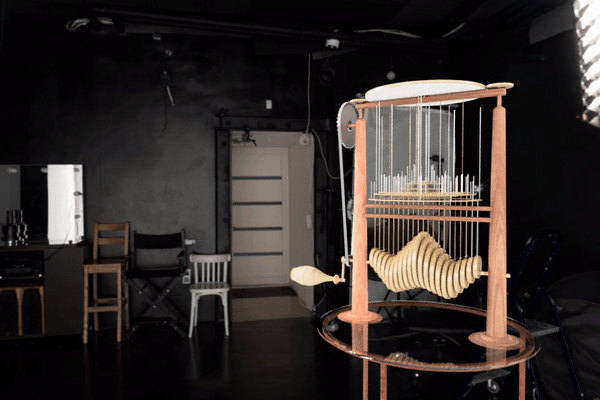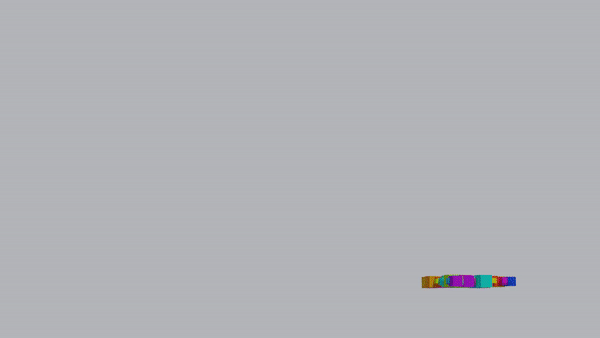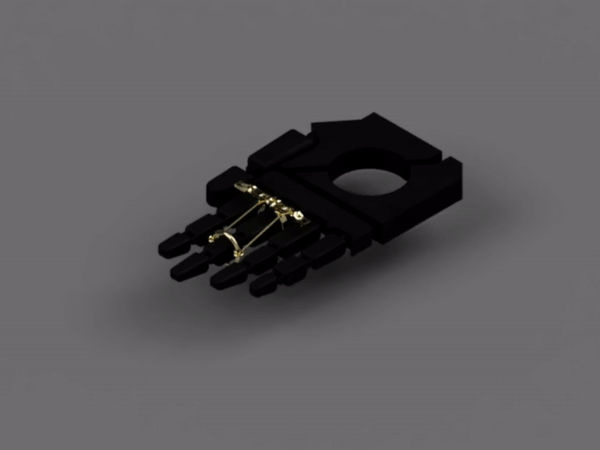Specialisation Studies | Pratik Mody
3D Fabrication
Harsh Shah
Fusion 360, Blender, Prussia Slicer, Reality Capture were the softwares we learnt. Photogrammetry, Geometry Nodes, 3d Printing, Product Designs, Parametric Designs we learnt it all. The focus was all on exploring and understanding new workflows. The end goal was to take back something that we could use ahead in life. The course was divided into 3 major parts, 3d modeling,3d printing and 2 final projects.
3D MODELING
To begin understanding modeling we first looked at a technical and detailed workflow where we worked on a product manufacturing software called Fusion 360. We went into really the detail of the design where we looked at every dimension of the element of the product, we looked into the materials as well as its assembly very precisely.We began with replicating our own bottles at 1:1 scale with great detail and created a still life composition. We concluded it with a final project in which we learnt how to even make realistic renders, and working drawings for the product to get manufactured if given to a fabricator.
 Harsh Shah, Vatsal Visharia, Prathamesh Deshmukh
Harsh Shah, Vatsal Visharia, Prathamesh DeshmukhFurther we expanded our horizon by diving into blender, a completely different approach where we could replicate our thinking through the various creative and open ended workflows it provided. We began with modeling realistic donuts which used almost all the workflows of blender briefly. Further we went on to understand specific parts of blender and explore them. We then designed a parametric tower , in which we understood how to use parameters for designing. We explored our ways into understanding modeling through nodes as well. To end the process we learnt to render our models with materials and self created textures.

Harsh Shah
![]() Jay Kanti, Riya Israni, Dishita Galchat
Jay Kanti, Riya Israni, Dishita Galchat
There were some forms which were achievable by modeling in blender, but a lot og forms that were nature driven were difficult to achieve, to tackle that we learnt photogrammetry; a technique where one can 3d scan a real life object and get a model of it by simply clicking detailed pictures in a sequence. We could then completely change the meaning of that object by rendering and simulations.
 Jay Kanti, Riya Israni, Dishita Galchat
Jay Kanti, Riya Israni, Dishita GalchatThere were some forms which were achievable by modeling in blender, but a lot og forms that were nature driven were difficult to achieve, to tackle that we learnt photogrammetry; a technique where one can 3d scan a real life object and get a model of it by simply clicking detailed pictures in a sequence. We could then completely change the meaning of that object by rendering and simulations.
3D PRINTING
The aim of the module was to understand 3d printing, for this part of it we learnt how to make our models that were water tight, since we had to bring them out of the virtual to the physical it was important that we look at the form as well in detail now. We learnt the softwares that helped us make our models watertight. We learnt two printing techniques, one in resin and the other in PLA(polylactic acid). 3D printing completely opened new ways of exploration.
![]() Prathamesh Deshmukh
Prathamesh Deshmukh
![]() Vatsal Visharia
Vatsal Visharia
The aim of the module was to understand 3d printing, for this part of it we learnt how to make our models that were water tight, since we had to bring them out of the virtual to the physical it was important that we look at the form as well in detail now. We learnt the softwares that helped us make our models watertight. We learnt two printing techniques, one in resin and the other in PLA(polylactic acid). 3D printing completely opened new ways of exploration.
 Prathamesh Deshmukh
Prathamesh Deshmukh Vatsal Visharia
Vatsal VishariaYash Mhatre, Dishita Galchat
![]() Harsh Shah
Harsh Shah
 Harsh Shah
Harsh Shah
FINAL PROJECTS
To conclude we worked towards a final project where we incorporated learnings from the whole process and used most of the techniques and workflows. The projects were all experimental and some were even functional.
![]() Diwakar Motwani, Pooja Dalal, Dhruvi Kachalia
Diwakar Motwani, Pooja Dalal, Dhruvi Kachalia
![]() Harsh Shah, Vatsal Visharia, Prathamesh Deshmukh
Harsh Shah, Vatsal Visharia, Prathamesh Deshmukh
To conclude we worked towards a final project where we incorporated learnings from the whole process and used most of the techniques and workflows. The projects were all experimental and some were even functional.
 Diwakar Motwani, Pooja Dalal, Dhruvi Kachalia
Diwakar Motwani, Pooja Dalal, Dhruvi Kachalia Harsh Shah, Vatsal Visharia, Prathamesh Deshmukh
Harsh Shah, Vatsal Visharia, Prathamesh Deshmukh
Jay Kanti, Riya Israni